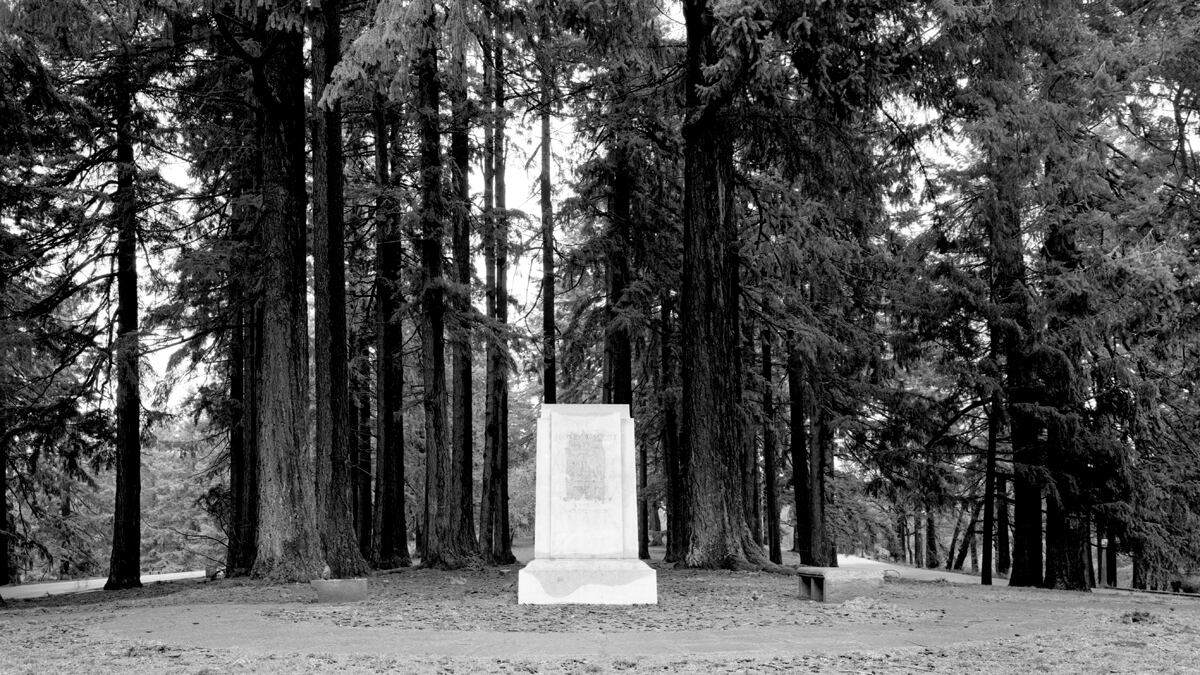If 2020 was the year everything seemed to shatter in Portland, 2021 was a time this city looked into the cracked mirror—and recoiled.
The year began with plywood-covered windows; it ends with tent camps lining highway exits. Multiple candidates for governor next year will center their bleak campaigns on how the streets of Portland are in disarray.
Lots of places in this city could use some love and some leadership. But some changed more fundamentally than others.
As we reflected on a tumultuous year, we found our gaze straying toward a handful of places that will never look or feel the same way again.
Places where the ideals and realities of this city collided—sometimes violently.
In the following pages, we revisit a half-dozen specific locations where the currents of 2021 met.
A baseball diamond where complaints about campers turned deadly. A convention hall that saved thousands of lives. A soccer field where illusions were punctured. A shopping center turned into a playground for would-be brownshirts. Sidewalks where this city could not stanch the bleeding. And a pedestal where an artist imagined a better history.
When we think of these six places in Portland, we will always remember what happened there in 2021. Some of it was agonizing. Other moments gave us hope. But they are places where the struggle with a difficult year left a mark on the landscape.
Lents Park
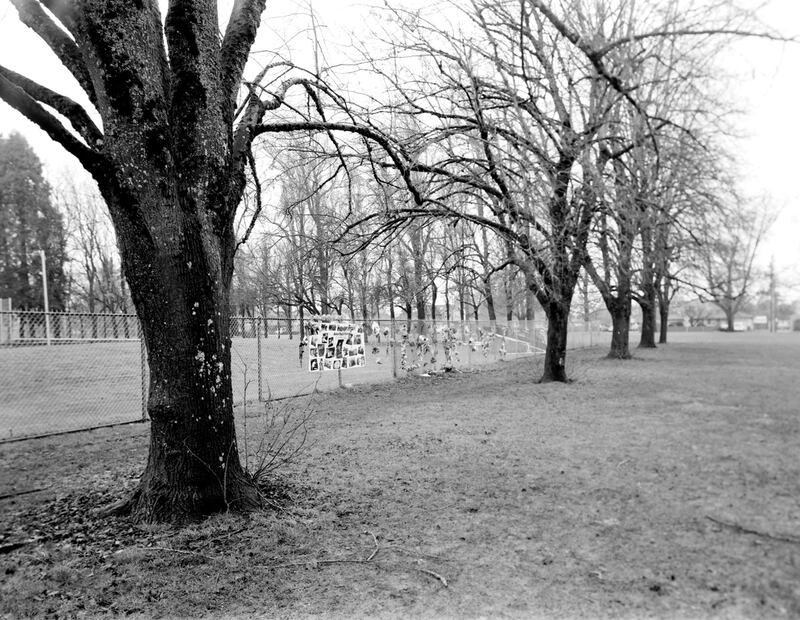
If one place embodied a hurting city in 2021, it was Lents Park, a 38-acre leisure ground in one of Portland’s poorest neighborhoods. It was the location of some of the most preventable tragedies this year, and revealed some of the ugliest undercurrents in Portland.
On April 16, a Portland Police Bureau officer named Zachary DeLong shot and killed Robert Delgado, an unhoused man who suffered from mental illness. The encounter began when a Lents resident called the city’s non-emergency line to report a man quick-drawing a handgun near the Pickles stadium. Minutes after DeLong arrived at the park, he shot and killed Delgado, believing the gun Delgado aimed at him was real (it was a replica). The shooting also occurred in the only neighborhood that Portland Street Response was allowed to respond to at that time, although it occurred outside the program’s designated hours, and the call was not coded as mental health-related by police or by the city’s Bureau of Emergency Communications.
“A police force is not equipped or trained to mediate mental health issues,” says Raven Drake, a program manager for Street Roots. “We don’t ask our plumber to go arrest criminals; we don’t ask our psychiatrist to go in and solve a bank robbery.”
Nowhere else in the city was the friction between homeowners, shop clerks and homeless people more obvious than in this neighborhood at the city’s southeast edge.
The Lents Neighborhood Livability Association, an anti-crime group separate from the official Lents Neighborhood Association, held a heated meeting last April where multiple residents said tensions between the homeless and homeowners were at a boiling point: “We’re victims now and, at some point in time, we’re gonna be criminals…and we’re going to be the ones that go to jail for protecting our families,” one attendee said.
In August, Burgerville declared it was closing its Lents location because of increased crime and vandalism connected to a homeless camp adjacent to the fast food restaurant. (Police reports did not substantiate the claims, and Burgerville did not share its incident log.) Shortly after the burger outlet’s closure, a portion of the camp was swept by the city. The campers moved back in just days later—emblematic of the persistence of our housing crisis.
Lents was superheated in more than one way. The neighborhood transformed into a pressure cooker during the summer “heat dome” that killed 59 people in the Portland area. On any given day, climate scientist Vivek Shandas told WW, parts of Lents are up to 20 degrees hotter than the forested West Hills. During the heat dome, that meant the pavement surrounding Lents Park cooked to 180 degrees. It was a taste of how climate change disproportionately hurts the places and people our city has most neglected.
“I think the city hasn’t paid attention to what’s happened in Lents,” Drake says. “I wouldn’t say they’ve knowingly failed it, but apathy is no excuse.” SOPHIE PEEL.
Oregon Convention Center
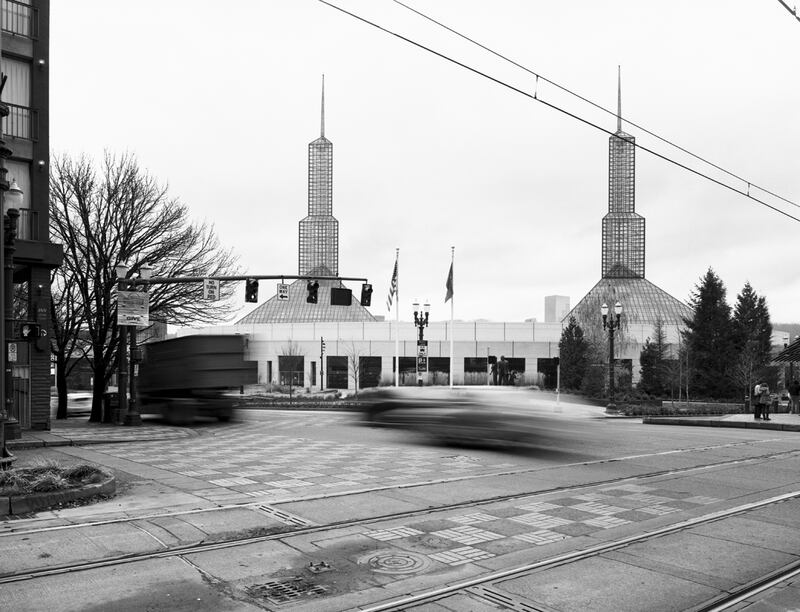
2021 was a year of deaths.
More than 3,800 Oregonians died after contracting COVID–19. And Multnomah County, for the first time, saw its first climate deaths: 59 people perished during the record-high temperatures of late June.
But an unlikely spot in town became a source of life.
The Oregon Convention Center, which pierces the skyline with its glass towers, used to be a bit of a blank spot on the skyline of a vibrant city—a spot where out-of-town dentists met to discuss molars. But in 2021, with the convention and tourism business on life support, it became more like the heart of the city, the muscle keeping Portland alive.
Most dramatically, it became the largest vaccination clinic in the state, where a quarter-million Oregonians got their shots.
After federal and state leaders bungled much of the response to the coronavirus, the vaccine clinic was a show of competence, a massive undertaking gone right.
At its peak, 1,100 people an hour stepped through the doors of the Convention Center for a dose.
“I shudder to think what the COVID experience would have looked like 50 years ago,” says Joe Ness, senior vice president and chief operating officer at Oregon Health & Science University. A pharmacist by training, Ness set up pharmacy operations with the three other hospital systems at the Convention Center and at OHSU’s drive-thru vaccine clinics.
He kept an empty vaccine vial as a token of that time.
“To take a technology that’s been in development for a decade but still in the experimental phase,” Ness adds, “to take that technology and so quickly deploy what might end up being one of the world’s most successful vaccines—how many people have gotten the vaccine, the safety profile, how fast it was deployed—it is really remarkable.”
Visitors to the clinic were greeted by a logistical masterpiece of rope lines and socially distanced stickered dots on the floor. It had an air of bubbly joy, and weighty solemnity. People cheered and cried.
Just weeks after it closed, as shots became more common than the arms to get them, the Convention Center became a cooling center for the record-high 116-degree weather, its space all the more important for Portlanders who lacked air conditioning. In February, it had served as a warming shelter against the extreme cold.
That just added to the service at the center during the pandemic. In 2020, it was a homeless shelter, when county officials wanted more social distancing; then it became a evacuation shelter after record-sized wildfires. And it hosted COVID testing to boot.
2022 begins with more uncertainty. A new and potentially larger wave of COVID cases and hospitalizations approaches; the vaccinations that provided hope in the spring need a boost, health experts finally agree.
But the Convention Center stands as a reminder of hope, that there are still things humans are capable of doing for one another.
“At the time I was doing it, it was such a feeling of frenzy,” says Dr. Katie Sharff, who oversees infectious disease as Kaiser Permanente and worked to keep the vaccine clinic a safe experience. “As much as there’s so much on the horizon with COVID, as I reflect back on the last year, it’s amazing that we were able to offer that many Oregonians protection against COVID illness and do it in such an efficient and safe manner. That feels like something to be proud of.” RACHEL MONAHAN.
Providence Park
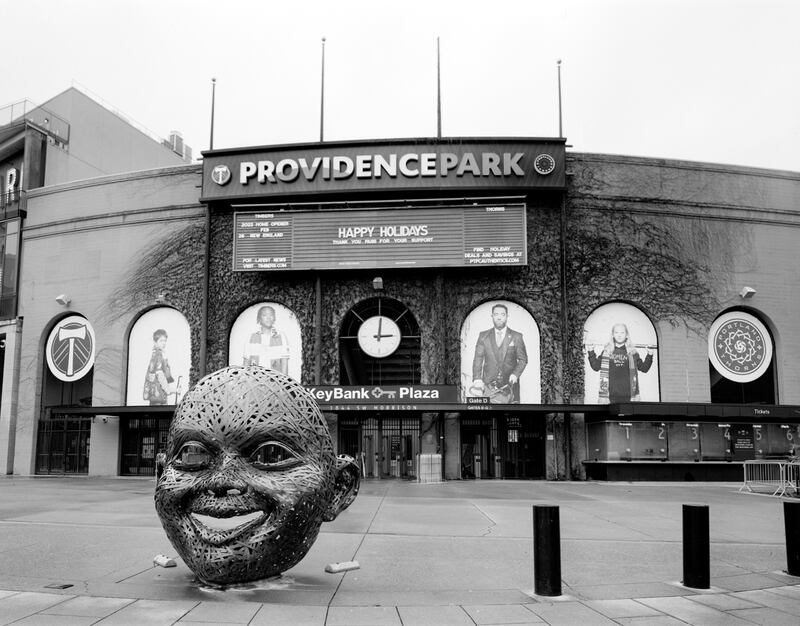
Standing in this soccer stadium, surrounded by a throng of die-hard Thorns FC fans called the Rose City Riveters, feels as close as some Portlanders get to attending church. The National Women’s Soccer League team sets perennial attendance records because the team and its supporters forged a bond—something that felt like community.
But in October, a long investigative story on sports website The Athletic made fans question whether the Thorns were really so exceptional.
The bombshell: allegations that onetime coach Paul Riley had sexually harassed two Thorns players, Meleana “Mana” Shim and Sinead Farrelly, from 2012 to 2015. The story alleged that Riley had groomed both players, slept with Farrelly, and taken advantage of the power imbalance between himself and the players by asking them to kiss in exchange for easier drills at practice.
Adding to the gravity of the revelations was Shim’s account that she had reported Riley’s behavior to the Thorns front office in 2015. Riley’s contract wasn’t renewed—but he was still able to go on to coach two other teams for six years before the investigative exposé resulted in his immediate firing and suspension of his coaching license.
Thorns fans—and even cursory half-watchers—who saw Portland’s professional women’s soccer team as bar-raisers for equity in women’s sports had a rude awakening. Here was a game that seemed entirely devoted to the impressive athleticism and empowerment of women, and yet it appeared to be built, as one fan told WW, on “a pile of sand.”
Continued pressure from both fans and Thorns players led to the removal of Thorns general manager Gavin Wilkinson from overseeing the team during an investigation in which he was implicated in the harassment—for allegedly telling Shim to stop talking about being queer—but it did not cost him his job with the Portland Timbers.
The hiring of Karina LeBlanc as Thorns GM and Rhian Wilkinson (no relation to Gavin) as the team’s new coach in November were no doubt meant as signs of progress; both are women and former players. But at the press conference to welcome her aboard, Wilkinson admitted, “There’s a real bias towards female coaches, which I think the players have as well. And that’s because there’s not that many of us.”
The queasy feelings inside Providence Park were echoed across the river at Moda Center, where Trail Blazers general manager Neil Olshey was fired for allegedly subjecting underlings to expletive-heavy rants (not to mention leading a team that’s fairly bad at basketball). But the Blazers have been through scandals before; this is hardly their low point.
For Timbers and Thorns fans, the disillusionment was more fundamental. At best, the franchise was operated by hypocrites; at worst, owner Merritt Paulson placed players in the care of a predator rather than confront abuse. (A team investigation is ongoing.) It didn’t help that Timbers and Thorns management required COVID vaccinations for fans only after pressure from supporters’ groups.
“Honestly, I feel so disheartened, so alienated by the leadership of my club that I can’t even discuss it anymore,” Timbers fan Richard Miller says. (Miller was part of a tifo group that, earlier this year, created banners of vaccine syringes in the shape of the Iron Front symbol—a previous point of contention between fans and the front office.)
In some respects, Portland soccer fandom has returned to its old rhythms—like the thrill and heartbreak of a Timbers’ penalty-kick loss of a championship match in December. But the memory of wins and losses fades. What lingers is the impression that the walls of Providence Park are the heels of power dug in, only pushed toward progress with great force. SUZETTE SMITH.
Vacant Parkrose Kmart
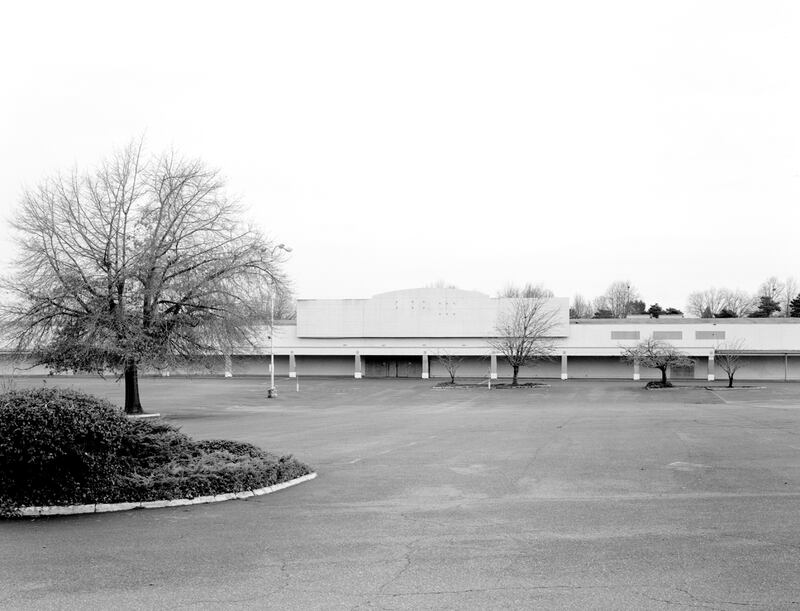
Portlanders living on the eastside have long expressed feelings of neglect by City Hall. On Aug. 22, residents of the Parkrose neighborhood felt particularly abandoned.
Two days before, Mayor Ted Wheeler and Portland Police Chief Chuck Lovell announced at a press conference that police would not intervene in violent brawls between Proud Boys and anti-fascist counterprotesters. Instead, Wheeler asked the city “to choose love.”
The chief put a finer point on this tactical plan, or lack of one.
“I just want to reiterate,” Lovell said, “we’re not going to deploy people to stand in a line or in the middle of violent groups to keep people apart where it doesn’t make tactical sense to do so.”
For years, fights between opposing political factions on Portland’s streets have escalated into violence—in what experts say appeared to be training for a failed insurrection at the U.S. Capitol in January.
More than seven months later, an outer eastside neighborhood became the arena for more political theater between the Proud Boys and their opponents. But unlike at past political clashes in Portland, police were nowhere to be seen.
On Aug. 22, a Proud Boys rally moved suddenly from downtown Portland to a nearly 7-acre parking lot that surrounds an empty Kmart in the Parkrose neighborhood.
Unsurprisingly, following speeches MC’d by right-wing brawler Tusitala “Tiny” Toese, anti-fascist counterprotesters pulled up in a white ambulance van, ready for a confrontation.
A melee between the dueling groups ensued. The brawls spilled out onto adjacent 122nd Avenue, causing traffic to swerve out of the way and into the Parkrose High School parking lot. The groups shot off fireworks and paintballs, which splattered the streets and nearby businesses, and one photojournalist was assaulted by what appeared to be a left-wing protester clad in black bloc.
Neighbors told WW they felt terrorized. A nearby restaurant worker said they feared for employees’ and customers’ safety, causing the restaurant to shut down that day. Employees at the Wendy’s on 122nd said someone sprayed tear gas or pepper spray into the restaurant’s dining room.
And as WW first reported, employees at the nearby Chevron gas station called 911 because they feared an explosion as protesters ignited fireworks within feet of the fuel pumps.
“Yeah, so we have police monitoring the situation,” a Bureau of Emergency Communications operator told the employee who called. “If anything happens, like, if anything does catch a spark on your property, you can call us on 911 and we can send help. Police at this time are not intervening.”
Police never showed up at Parkrose. Wheeler declared the day’s events a victory for public safety. (The mayor later walked back that statement.)
East Portlanders heard the message loud and clear.
For City Commissioner Carmen Rubio, this event crystallized the need for City Hall to prioritize East Portland and the people who live there.
“Investing in communities—from strong schools and economic opportunities, to community services, affordable housing, and access to child care, parks, and recreation activities—all of these things are a violence prevention strategy, and the historic underinvestment in East Portland had very real, painful consequences across this year,” Rubio tells WW. “We took steps to begin correcting that, but our work must continue into 2022 and beyond.” TESS RISKI.
Hazelwood
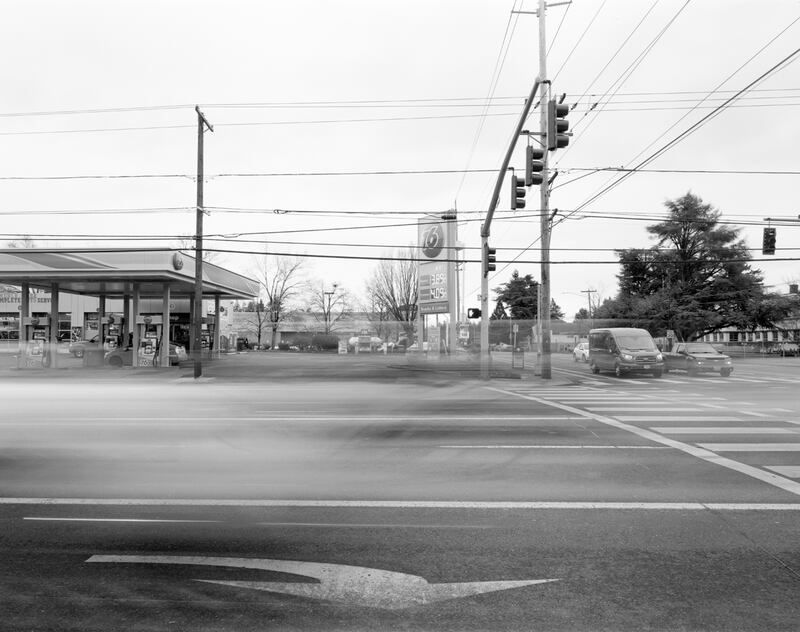
Of all the Portland milestones set in 2021, two of the most tragic are new records for fatal traffic accidents and gun shootings.
The epicenter for both may be the Hazelwood neighborhood, which runs east from Interstate 205 to 148th Avenue and is bounded on the north by Northeast Halsey Street and on the south by Southeast Division Street.
Earlier this year, the advocacy group Oregon Walks released a study of three years of pedestrian fatalities. Its findings: 41 of the 48 deaths the group investigated occurred east of the Willamette River, and half of them east of 82nd Avenue.
For traffic crashes, there’s no more dangerous place in Portland than Hazelwood. Over the past decade, according to the Portland Bureau of Transportation, crashes on outer Division have killed 20 people and seriously injured 107. Most were in or near Hazelwood.
Oregon Walks found that’s because motorists drive too fast on poorly lit streets that are too wide and have too few crosswalks. The nonprofit’s executive director Ashton Simpson says there’s a new contributing factor this year—a third of the pedestrians killed in 2021 were unhoused.
“You can’t allow people to sleep in such dangerous places,” Simpson says. “That’s a housing issue.”
“So many places in East Portland were built for cars and not for people,” adds Multnomah County Commissioner Jessica Vega Pederson. “We’re trying to change that perspective, but it takes time and a lot of money to do that.”
PBOT has poured $120 million into its Vision Zero safety program, with much of it aimed at dangerous intersections in Hazelwood and nearby neighborhoods. But the crashes keep coming: The Portland Police Bureau has reported 65 traffic deaths through Dec. 17, the most since 1987.
In a year that’s also seen more shootings and homicides than any period in Portland history, Hazelwood tops the list as well.
Through the end of November, the Police Bureau has recorded 1,177 shootings, a new record—and more than three times the level it was just two years ago.
The neighborhood with the most gun violence: Hazelwood, which saw 100 reported shootings through November. Vega Pederson, who lives in Hazelwood, says a neighbor who’s a frequent gardener recently discovered nearly 100 bullet casings in the street.
“It’s different from before,” Vega Pederson says. She cites the pandemic, the loss of jobs, school time and social outlets and the jostling of people who have been pushed out of other parts of the city as contributing factors.
“What’s happening in Hazelwood is a tragedy,” Vega Pederson says. “I think there’s a sense here that what happens in East Portland has been ignored forever.” NIGEL JAQUISS.
Mount Tabor
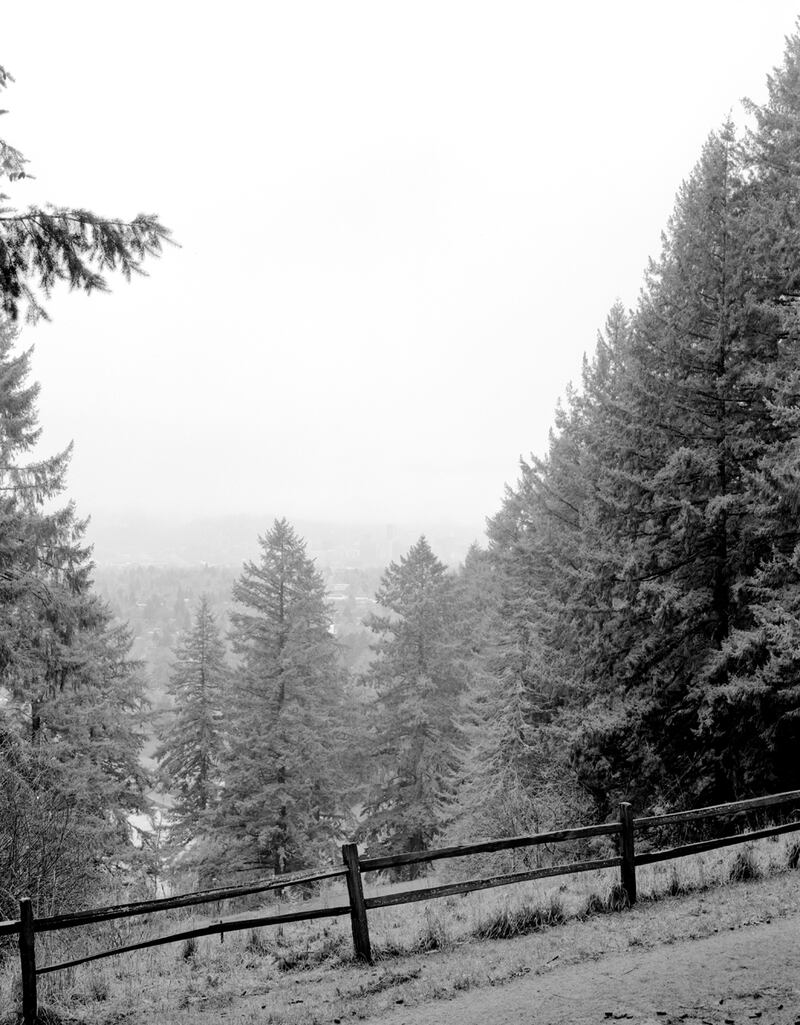
Early in 2021, a strange and wonderful visitor landed atop this extinct volcanic dome.
A few hours after midnight on a late February morning, a then-anonymous sculptor carted a bust of York, the only Black member of Lewis and Clark’s Corps of Discovery, up the hill and installed it without permission.
The pedestal had previously held a monument to Harvey Scott, a former Oregonian editor and reactionary who opposed women’s suffrage. That statue had been yanked from its perch the prior October, part of a wave of felled monuments during racial justice protests.
For a few months, York attracted curious and inspired onlookers to make pilgrimages up Tabor—finding on the mountaintop evidence that the people of Portland can create, not just destroy. For a while, anyway: Somebody knocked over the bust of York in July, hacking its face with a machete.
At the end of last year, Mt. Tabor Park became the first location in Third Angle New Music’s immersive acoustic series called Soundwalks. During what had, at that point, become one of the darkest periods of the pandemic that saw soaring COVID cases and a second state-mandated freeze on businesses, the recording offered a one-hour respite from disease and despair.
Then, in the summer of 2021, once the widespread availability of vaccinations seemed to promise three sunny months of loosened restrictions and little to fear, a Portland Parks & Recreation-sanctioned pop-up concert took place at Mount Tabor. The agency, still acting out of caution, never announced that neo-soul group Moon Music would play live at the park, in order to keep the crowd size small.
As for York: Its sculptor, Todd McGrain, later revealed his identity to WW, and has offered to create a new bust out of bronze (the original was polyurethane—a less durable material). That will require approval by both the Regional Arts & Culture Council and Portland Parks & Recreation. But the discussion about a permanent York can’t even begin until the fate of Harvey Scott—along with that of four other removed monuments—is determined.
“Any decisions will have to wait for this community engagement process to play out,” says Jeff Hawthorne, the city’s arts program manager, “but I anticipate that we will get lots of community feedback.”
In other words, making York an enduring part of Portland’s landscape will mean another rehashing of the past, another debate about what this city should look like. For now, the pedestal atop Mount Tabor will remain bare. ANDI PREWITT.
